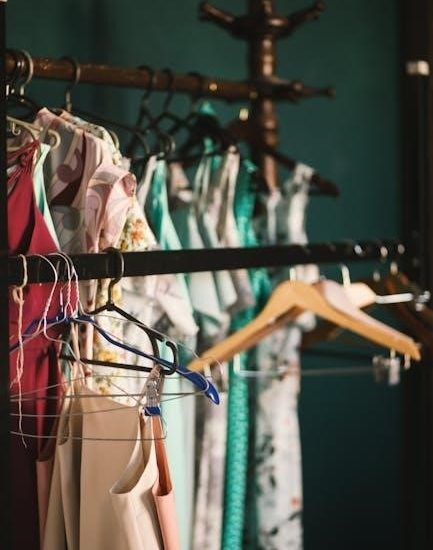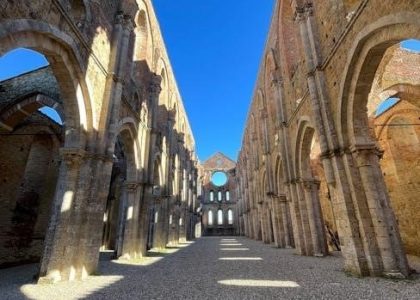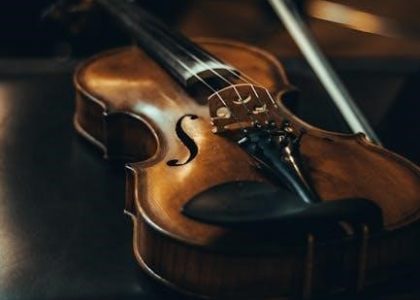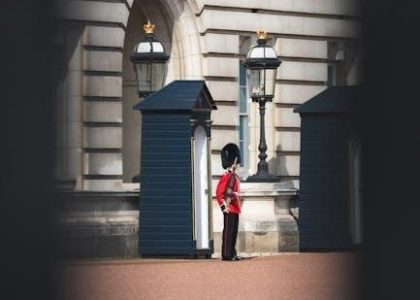Medieval clothing and textiles represent an interdisciplinary study of history, art, literature, and economics, spanning 500-1550 CE, with a focus on the Silk Road’s influence and regional styles.
1.1. Historical Context of Medieval Clothing
Medieval clothing and textiles spanned from 500 to 1550 CE, reflecting societal hierarchies, religious practices, and regional influences. The period saw a transition from practical, simple garments to more decorative attire, especially among the elite; The Silk Road and trade routes introduced luxurious fabrics like silk, while wool remained a staple for the masses. Clothing symbolized status, with sumptuary laws regulating dress to maintain social order. Religious habits and monastic attire further emphasized the interplay between faith and fashion, shaping the visual identity of medieval Europe.
1.2; Importance of Textiles in Medieval Society
Textiles played a vital role in medieval society, serving as a cornerstone of the economy and culture. Wool was the most dominant fabric, driving trade and influencing social hierarchies. Silk, while rare, symbolized luxury and elite status. Textiles were not only essential for clothing but also for furnishings, trade, and even as a form of currency. The production and distribution of fabrics like wool and linen supported guilds and craftsmanship, fostering economic growth. Additionally, textiles reflected religious and cultural values, with intricate designs often signifying piety or wealth. This made them a symbol of both practicality and status in medieval life.
1.3. Evolution of Fashion in the Medieval Period
Medieval fashion evolved significantly, transitioning from simple, functional garments in the early period to more intricate designs later on. Early medieval clothing, such as tunics and mantles, prioritized practicality, while high medieval fashion introduced patterns and elaborate textiles. The late medieval era saw the rise of tailored clothing, with curved shapes and decorative elements like dagging. These changes reflected cultural shifts, economic prosperity, and the influence of trade. Fashion became a marker of status, with the elite adopting luxurious fabrics and styles that contrasted with the simpler attire of the lower classes, showcasing a dynamic interplay between functionality and aesthetic expression.
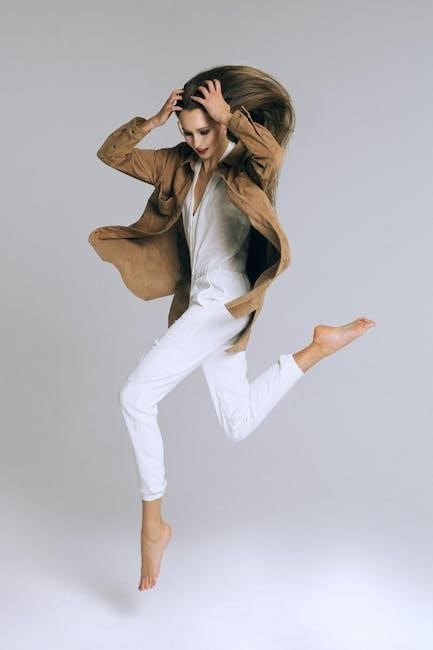
Materials and Fabrics in Medieval Clothing
Medieval clothing utilized diverse fabrics like wool, silk, linen, leather, and furs, reflecting social status and practical needs. Wool and linen were common, while silk and furs signified luxury.
2.1. Wool: The Dominant Fabric of the Medieval Period
Wool was the most widely used fabric in medieval clothing, valued for its durability and versatility. It was worn by all social classes, from peasants to nobility, and was used for garments like cloaks, tunics, and leggings. The quality of wool varied, with finer grades reserved for the wealthy, while coarser types were used for everyday wear. Wool production was a cornerstone of the medieval economy, with England and Flanders emerging as major centers for wool trade. The fabric’s ability to retain warmth and withstand wear made it indispensable in the cold climates of Northern Europe, shaping both practical and fashionable attire.
2.2. Silk: A Luxury Fabric for the Elite
Silk was a highly prized luxury fabric in the medieval period, reserved for the elite due to its rarity and high cost. Imported via the Silk Road from Asia, it symbolized wealth and status. Silk garments were often decorated with intricate embroidery and dyed in vibrant colors, making them stand out. Nobility and high-ranking clergy frequently wore silk for special occasions, while its use by the middle class was strictly regulated by sumptuary laws. Silk’s smooth texture and lustrous appearance made it a sought-after material, though its exclusivity limited its accessibility to the general population.
2.3. Linen and Other Plant-Based Fabrics
Linen, made from flax, was a widely used plant-based fabric in medieval times, valued for its durability and breathability. It was commonly worn by peasants and the lower classes due to its practicality. Linen was used for undergarments, shirts, and simple clothing, as it was easy to produce and maintain. Other plant-based fabrics, like hemp and nettle, were less common but also utilized for everyday wear. These fabrics were accessible to most people, making them integral to the wardrobe of the general population, though they lacked the prestige of wool or silk. Their production involved spinning and weaving flax fibers, a labor-intensive process.
2.4. Leather and Furs in Medieval Attire
Leather and furs played significant roles in medieval clothing, offering durability and warmth. Leather was used for shoes, belts, and accessories, while furs were reserved for the wealthy, symbolizing status. Fur-lined garments and trimmed cloaks were common among nobles, serving both functional and symbolic purposes. The use of leather and fur reflected social hierarchy, with peasants relying on leather for practical items like shoes and belts. Tanning and treating hides were essential skills, ensuring the longevity of these materials. Their versatility made them indispensable in medieval attire, blending practicality with luxury, depending on the wearer’s social standing and resources.
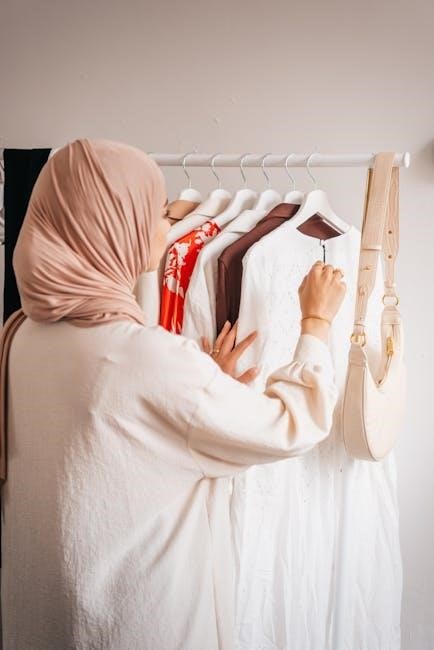
Social Classes and Their Clothing
Medieval clothing reflected social hierarchy, with peasants in simple, practical attire and royalty in luxurious fabrics, symbolizing status and wealth through dress.
3.1. Royal and Noble Attire
Medieval royal and noble attire was characterized by opulence and extravagance, reflecting their high social status. Luxurious fabrics like silk, velvet, and fine wool were commonly used, often dyed in vibrant colors. Royalty and nobles adorned themselves with intricate embroidery, fur linings, and precious gems, symbolizing wealth and power. Their clothing featured tailored designs, such as fitted gowns, surcoats, and cloaks, often trimmed with ermine or other rare furs. The use of these materials and styles was not only a display of status but also a visual representation of their authority and influence in society. This attire was deeply symbolic, often reflecting moral and cultural ideals of the elite.
3.2. Clothing of the Clergy and Monastic Orders
Medieval clergy and monastic orders wore distinctive attire that reflected their spiritual roles and detachment from worldly vanity. Clerical clothing was simple, functional, and modest, often in dark colors like black or brown, symbolizing humility. Monks and nuns donned habits made from durable, natural fabrics such as wool and linen, designed for practicality rather than fashion. Their garments included long robes, hoods, and crosses, emphasizing their devotion and separation from secular life. This attire served as a visual representation of their commitment to religious vows, reinforcing their identity and role within the medieval Church.
3.3. Merchants and Townspeople: Middle-Class Fashion
Merchants and townspeople in the medieval period dressed in attire that reflected their growing prosperity while maintaining practicality. Their clothing was made from durable fabrics like wool and linen, often in shades of brown, green, and blue. Garments such as tunics, cloaks, and hose were common, with women wearing long dresses and head coverings. Middle-class fashion was less elaborate than that of the nobility but more refined than peasant clothing, signaling their improving social and economic status. This group embraced modest embellishments, like embroidery, as trade and urbanization expanded their access to finer textiles and styles.
3.4. Peasant Clothing: Practicality and Simplicity
Peasant clothing was characterized by simplicity and practicality, reflecting their labor-intensive lifestyle. Made from durable materials like linen and leather, their garments were designed for functionality rather than fashion. Men wore tunics, braies, and leg wraps, while women wore long, simple dresses. Earthy colors dominated, as natural dyes were used. Peasants often made their own clothing, mending and repurposing fabrics to extend their use. Footwear was sturdy, such as leather shoes or wooden pattens. Accessories were minimal, with caps and cloaks serving practical purposes. Their attire reflected their social status and the necessity of durability over aesthetics in their daily lives.
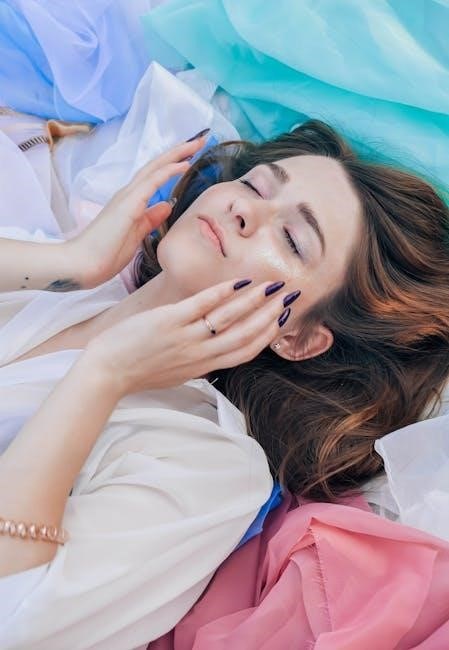
Fashion and Aesthetics in Medieval Clothing
Medieval fashion evolved from functional early styles to decorative high medieval designs, reflecting status and regional influences, with tailored garments and symbolic elements emerging in later periods.
4.1. Early Medieval Fashion: Functional and Plain
Early medieval fashion emphasized practicality over decoration, with clothing designed for durability and comfort. Garments were simple, often made from wool, linen, and leather, reflecting the limited resources of the time. Peasants wore basic tunics, leggings, and cloaks, while the upper class sported slightly tailored versions of these essentials. The church’s influence promoted modesty, discouraging elaborate designs. Regional variations existed, but overall, early medieval dress prioritized functionality, with minimal ornamentation and a focus on simplicity. This period laid the foundation for later stylistic developments, showcasing a utilitarian approach to fashion.
4.2. High Medieval Fashion: Intricate Designs and Patterns
During the high medieval period, fashion evolved from simple, functional garments to more elaborate designs. Intricate patterns, embroidery, and decorative elements became prominent, reflecting the growing influence of trade and cultural exchange. The Crusades introduced luxurious fabrics like silk and velvet, while advancements in textile production allowed for more complex weaving techniques. Garments began to feature curved shapes, dagged edges, and ornate trimmings, symbolizing wealth and status. Sumptuary laws regulated excessive decoration, but the elite continued to showcase intricate designs, marking a shift toward a more aesthetic and symbolic approach to dress.
4.3. Late Medieval Fashion: The Rise of Tailored Clothing
The late medieval period saw a significant shift toward tailored clothing, marking a departure from earlier loose-fitting garments. Advances in tailoring techniques, such as curved seams and fitted silhouettes, allowed for more precise garment construction. This era introduced tailored doublets, hose, and intricate fastenings, reflecting a growing emphasis on individualized fashion. The use of luxurious fabrics like silk and velvet further highlighted the trend, as did the adoption of decorative elements like embroidery and dagged edges. Tailored clothing became a status symbol, with the wealthy showcasing bespoke designs that emphasized their social standing and refinement. Regional styles also began to emerge, influenced by local tailoring traditions and cultural exchange.
4.4. Symbolism and Status in Medieval Dress
Medieval clothing was deeply symbolic, reflecting social hierarchy, religious devotion, and moral values. Sumptuary laws regulated fabric quality and color to enforce class distinctions, with purple reserved for royalty. Clerical attire signified spiritual authority, while monastic habits conveyed humility. Wealthy merchants displayed opulence through intricate patterns and luxurious fabrics, despite moral critiques of excess. Women’s clothing often symbolized modesty, with veils and loose-fitting garments emphasizing virtue. Status was further expressed through accessories like jewelry and belts, which underscored rank and wealth. Clothing thus served as a visual language, communicating identity, piety, and social standing in a highly stratified society.
Accessories and Adornments
Medieval accessories, such as jewelry, headwear, belts, and footwear, served both functional and decorative purposes, reflecting status, cultural influences, and personal identity in medieval society.
5.1. Jewelry and Precious Stones in Medieval Clothing
Jewelry and precious stones were integral to medieval attire, serving as symbols of wealth, status, and piety. Nobles adorned themselves with gold, silver, and gems like pearls, rubies, and emeralds, often in intricate designs. Religious motifs were common, reflecting devotion. The clergy and aristocracy favored ornate pieces, while simpler designs were worn by the middle class. Jewelry also signified marital status and social rank. Accessories like brooches, necklaces, and rings were both decorative and functional, securing clothing or carrying religious relics. The use of precious stones underscored the wearer’s prestige, making jewelry a vital element in medieval dress and identity.
5.2. Headwear: From Simple Caps to Elaborate Headdresses
Medieval headwear varied greatly, reflecting social status and practical needs. Peasants wore simple woolen caps or hoods, while the nobility favored elaborate headdresses. Women’s headwear often signified marital status, with married women covering their hair. Men’s hats ranged from close-fitting caps to tall, decorative designs. Materials included wool, felt, and silk, with embroidery and jewels adorning higher-status pieces. Clerical hats, like miters, symbolized religious authority. Headwear also served as a marker of fashion, with styles evolving from plain to ornate over the medieval period. This diversity in headwear underscored its role in identity, status, and cultural expression during the Middle Ages.
5.3. Belts and Girdles: Functional and Decorative
Belts and girdles served both practical and decorative purposes in medieval clothing. Made from leather, fabric, or metal, they secured garments and emphasized the wearer’s waist. Simple leather belts were common among peasants, while the elite used ornate girdles adorned with jewels or embroidery. These accessories symbolized wealth and status, with intricate designs reserved for the nobility. Women often wore decorative girdles as part of their formal attire, while men used belts to carry swords or tools. Belts also featured in religious contexts, such as symbolic girdles worn by clergy. Their dual functionality and aesthetic appeal made them indispensable in medieval dress.
5.4. Footwear: Shoes, Boots, and Pattens
Medieval footwear varied significantly, reflecting social status, occupation, and climate. Shoes and boots were crafted from leather, often hand-stitched, while pattens, wooden soles with leather straps, were used for outdoor protection. Peasants wore simple, durable designs, whereas the nobility favored intricately decorated styles. Archaeological finds reveal a range of footwear, from ankle boots to low-cut shoes, often adorned with brogue detailing. Pattens were essential for muddy or wet conditions, offering practicality. These items, along with their construction techniques, highlight the ingenuity and craftsmanship of medieval textile and leatherworkers, as well as the symbolic role of footwear in indicating wealth and status.
The Economic Impact of Textiles
Medieval textiles were central to the economy, driving trade and innovation. Wool and silk commerce shaped wealth, social hierarchies, and cultural exchange across regions.
6.1. The Wool Trade and Its Significance
The wool trade was a cornerstone of the medieval economy, driving prosperity and shaping trade networks across Europe. Wool production dominated, with regions like Flanders and Italy excelling in high-quality textiles. The wool trade fueled urban growth, fostering guild systems and specialized labor. Its economic influence extended beyond clothing, impacting social hierarchies and wealth distribution. The luxury of fine wool fabrics symbolized status, while its widespread use in everyday attire underscored its essential role in medieval life. This commodity not only connected economies but also bridged cultural and geographical divides, making it a pivotal factor in medieval commerce and society.
6.2. The Silk Road and Luxury Fabrics
The Silk Road, a vast network of trade routes, connected Europe with the Mediterranean and Asia, facilitating the exchange of luxury fabrics like silk, damask, and velvet. These textiles, often adorned with intricate patterns, were highly prized by elites for their rarity and beauty. Silk, in particular, symbolized wealth and power, as it was imported from distant regions. The trade not only enriched medieval fashion but also fostered cultural exchange, with influences from Byzantine and Islamic styles blending into European attire. Luxury fabrics became a marker of status, shaping the aesthetic and social dynamics of medieval society.
6.3. Sumptuary Laws: Regulating Excess in Dress
Sumptuary laws were enacted to control excessive spending on clothing and to maintain social hierarchy. These regulations restricted the use of luxurious fabrics, colors, and embroidery based on social class. They targeted the rising middle class, whose increasing wealth threatened noble status. By limiting access to silk, velvet, and precious dyes, authorities aimed to preserve visual distinctions between classes. Such laws also reflected moral concerns, discouraging perceived decadence. Despite challenges in enforcement, sumptuary laws remained tools for regulating dress and reinforcing societal norms throughout the medieval period, influencing both fashion and the perception of social standing.
6.4. Craftsmanship and Guilds in the Textile Industry
Medieval textile production relied heavily on skilled craftsmanship, with guilds playing a central role in regulating quality and innovation. Guilds oversaw weaving, dyeing, and tailoring, ensuring high standards through apprenticeships and strict membership criteria. Artisans specialized in specific fabrics, such as wool and silk, while others excelled in embroidery or leatherwork. These organizations not only preserved traditional techniques but also drove advancements in textile manufacturing. Guilds also dictated pricing and distribution, dominating local and international markets. Their influence extended beyond economics, shaping the social hierarchy and artistic expression of the time, as master craftsmen gained prestige for their expertise.

Regional Variations in Clothing
Medieval clothing varied significantly across regions, influenced by climate, culture, and trade. Northern Europe favored warm, practical attire, while Southern Europe incorporated Mediterranean styles and luxurious fabrics like silk. Byzantine and Eastern European influences added unique embroidery and intricate designs, reflecting local traditions and status symbols. These regional differences highlight the diversity and adaptability of medieval fashion, shaped by geographical and cultural contexts.
7.1. Clothing in Northern Europe: Practical and Warm
Medieval clothing in Northern Europe was primarily designed for warmth and practicality due to the harsh climate. Wool was the dominant fabric, often woven into thick garments like cloaks, tunics, and leggings. Fur linings and layered clothing were common, especially among the wealthy, to withstand cold temperatures. Leather and fur were also used for footwear and accessories, ensuring durability. The design was simple and functional, reflecting the region’s focus on survival and daily labor. Regional trade influenced fabric availability, with woolen cloth being a staple. This practical approach to dress underscores the adaptability of Northern Europeans to their challenging environment.
7.2. Clothing in Southern Europe: Influenced by the Mediterranean
Southern Europe’s medieval clothing was shaped by the Mediterranean climate and cultural exchanges. Lightweight fabrics like linen and cotton were prevalent, often dyed in vibrant colors. The elite adorned themselves with silk and intricate embroidery, reflecting Byzantine and Islamic influences. Trade routes brought luxurious textiles, blending Romanesque and Moorish styles. Garments were tailored to be both elegant and practical, with flowing robes and tunics. The region’s fashion emphasized comfort in warmer temperatures while showcasing wealth and status through ornate designs. This cultural melting pot created a unique sartorial identity, distinct from Northern Europe’s utilitarian approach.
7.3. Eastern European Clothing: Unique Styles and Fabrics
Eastern Europe’s medieval clothing reflected its unique cultural and climatic conditions. Heavy woolen garments and furs were common, providing warmth in harsh winters. Embroidery and intricate patterns, often symbolic, adorned clothing, especially among the nobility. Linen undergarments were widespread, while leather and fur outerwear signified practicality. Trade with the East introduced silk and spices, influencing elite fashion. Regional styles varied, blending Slavic, Byzantine, and nomadic influences. Clothing often symbolized social status and ethnic identity, with vibrant colors and ornate designs distinguishing different groups. This diversity highlights the rich tapestry of medieval Eastern European dress.
7.4. The Influence of the Byzantine Empire on Medieval Fashion
The Byzantine Empire significantly influenced medieval fashion, particularly through its luxurious textiles and intricate designs. Byzantine silk production became a cornerstone of medieval trade, with patterns and motifs like gold embroidery and religious imagery being widely adopted. The use of Tyrian purple, reserved for imperial attire, symbolized power and status. Byzantine fashion also introduced a blend of Eastern and Western styles, which spread across Europe through trade and cultural exchange. The empire’s elaborate ceremonial garments and ornate accessories set a standard for opulence, shaping the aesthetic preferences of medieval elites and enduring in art and literature long after the empire’s decline.

Artifacts and Archaeological Evidence
Medieval artifacts, such as textiles, shoes, and jewelry, provide valuable insights into historical clothing and production techniques, revealing cultural and social dynamics of the period.
8.1. Textiles Found in Medieval Excavations
Medieval excavations have uncovered fragments of wool, linen, and silk textiles, revealing insights into production techniques and material quality. High-quality wool from London excavations highlights advanced crafting skills, while finds from other regions showcase regional styles and trade networks. These artifacts, often preserved in damp environments, provide detailed evidence of medieval clothing construction, including dyes, weaving patterns, and fabric finishes. Such discoveries are essential for reconstructing historical dress practices and understanding the social and economic contexts of textile production during the medieval period.
8.2. Clothing Depicted in Medieval Art and Literature
Medieval art and literature provide vivid depictions of clothing, reflecting social status, occupation, and cultural values. Illuminated manuscripts, tapestries, and literary works often detail intricate garments, such as ornate mantles, tunics, and headdresses. These sources reveal how clothing symbolized identity, with bright colors and luxurious fabrics like silk and scarlet signifying wealth and status. Literary descriptions, such as those in “The Medieval World,” emphasize the role of dress in conveying moral and religious ideals. Artistic representations, including the Bayeux Tapestry, offer insights into everyday and ceremonial attire, bridging the gap between historical records and visual culture.
8.3. The Bayeux Tapestry: A Visual Record of Medieval Dress
The Bayeux Tapestry is an extraordinary visual resource for understanding medieval clothing and textiles. This 70-meter embroidered cloth depicts scenes from the 11th century, including the Norman Conquest of England. It illustrates a wide range of garments, from simple tunics and leggings worn by ordinary soldiers to elaborate mantles and headdresses of nobles. The tapestry provides insights into fabric types, colors, and decorative elements, such as embroidery and brocade. It also highlights social distinctions through dress, with finer textiles and intricate designs reserved for higher-status individuals. This artifact remains a cornerstone for studying medieval fashion and textile history.
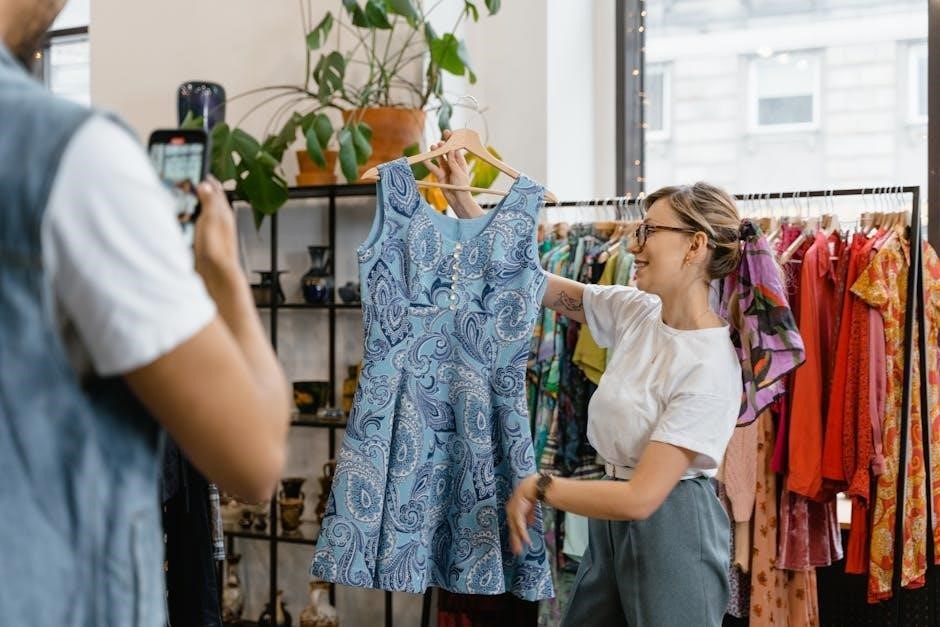
The Cultural and Religious Significance of Clothing
Medieval clothing reflected social status and religious identity, with sumptuary laws regulating dress to maintain order. Garments symbolized piety, morality, and cultural values, shaping societal norms.
9.1. Religious Habits and Their Role in Identity
Religious habits in the medieval period were integral to the identity of monastic and clerical communities. These garments, often simple and austere, symbolized renunciation of worldly vanity and devotion to spiritual life. Distinctive designs, such as the Franciscan brown robe or the Dominican black cloak, visually represented their order’s values and unity. The habit served as a uniform, fostering a sense of belonging and equality among members. It also signaled their role in society, separating the religious from the laity. Over time, these garments evolved to reflect theological shifts, becoming powerful tools for conveying spiritual authority and communal identity.
9.2. Clothing as a Symbol of Piety and Devotion
Clothing in the medieval period served as a visible expression of piety and devotion, reflecting religious teachings and moral values. Garments made from humble fabrics like wool and linen symbolized simplicity and humility, aligning with Christian ideals. Dark colors and plain designs were favored, avoiding excess and vanity. Religious habits, such as monastic robes, were worn to denote spiritual commitment and renunciation of worldly desires. These attire choices were not only personal acts of devotion but also public declarations of faith, reinforcing the wearer’s role within their religious and social communities.
9.3. The Influence of Christianity on Dress Codes
Christianity profoundly shaped medieval dress codes, emphasizing modesty and humility. Religious teachings discouraged excess and vanity, promoting simple, practical attire. The Church influenced sumptuary laws, regulating dress according to social status and moral standards. Clergy and monastic orders wore distinctive robes, symbolizing their spiritual devotion. Dark colors and plain fabrics were encouraged, while elaborate designs and bright hues were reserved for religious or ceremonial contexts. Clothing thus became a tool for expressing piety, reinforcing Christian values and distinguishing between the sacred and the mundane. This influence extended beyond religious figures, shaping societal norms and dress practices for all classes.
Medieval clothing and textiles left a lasting legacy, influencing modern fashion and sparking enduring interest. Their study bridges history, art, and culture, revealing a rich tapestry of human creativity and societal values.
10.1. The Legacy of Medieval Clothing in Modern Fashion
Medieval clothing’s influence is evident in modern fashion, with designers drawing inspiration from its intricate patterns, luxurious fabrics, and structured silhouettes. The use of wool, silk, and velvet, once reserved for the elite, now features prominently in high-end fashion. Elements like embroidery, lace, and tailored fits reflect medieval craftsmanship. HistoricalCostume elements, such as headdresses and layered garments, have also seen revivals. The emphasis on status through clothing, a medieval hallmark, continues in contemporary fashion branding. This enduring legacy highlights the timeless appeal of medieval textiles and their adaptability in modern design.
10.2. The Enduring Interest in Medieval Textiles and Dress
The fascination with medieval textiles and dress endures due to their rich historical significance and artistic craftsmanship. Scholars and enthusiasts alike study these artifacts to explore cultural, social, and economic histories. The intricate designs, luxurious fabrics, and symbolic meanings continue to inspire modern fashion and art. Interdisciplinary research, combining archaeology, literature, and history, has deepened our understanding of medieval dress. This enduring interest reflects the timeless appeal of these textiles, bridging the past and present while offering insights into identity, status, and creativity. Their study remains vital, preserving a tangible connection to our medieval heritage.

